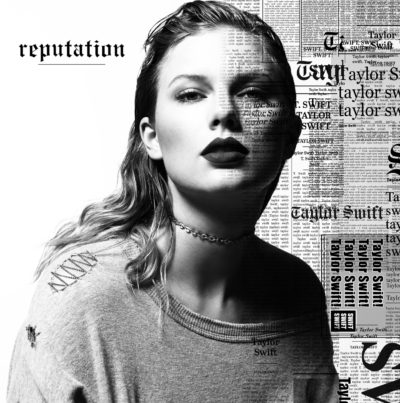The problem with perfection is the same one as the one with success: both are an expression of infinity.
If you are driven, you can be successful but still feel you aren’t successful enough. If you are a perfectionist, you can control every little detail but still feel you could have done more.
In each case, you’ve halved the distance between you and the infinite – there is still an infinite distance left to travel.
I think about this concept a lot, but never more than when I am considering a well-made album. Isn’t that the perfect intersection of success and perfection, plus some other nearly-infinite-to-measure quality of talent? As an artist, how do you go back into the studio when your last album is a critical and financial success, and just perfectly executed? It’s a tightrope act from which a lot of acts tumble.
Case and point: Taylor Swift’s 1989. It’s as perfect of a pop record as I’ve heard in my life. Every single song could survive on the radio as a single. And, unusually for a golden pop LP, it actually took home the Album of the Year trophy at the Grammies – a rarity.
I don’t think there is any way to top 1989, so Taylor just … didn’t. At least, not with her lead single “Look What You Made Me Do” of off Reputation, out next week.
Swift has a habit of releasing somewhat bare, unusual lead singles, but this one is less than that. The entire songs lacks for melody before it dissolves into an embarrassing faux-hip hop retread of “I’m Too Sexy.” The overwrought lyrics, usually a Swiftian specialty, but here coming off as protesting too much. And the cinema-quality video, which mashes up a lot of disconnected elements. (Why is she a zombie at the beginning? What is with the Beyoncé rip-off dance break).
Yes, I know it currently has over 600 million streams on YouTube. That’s the kind of half-infinite success you can maintain after a long streak of near-perfection.
If there’s one good bit of the song (and the video, as it happens), it’s the string-tinged bridge with little tinkles of carousel music. It’s everything the rest of the song isn’t but wants to be – catchy, lush, and foreboding.
It’s from that point that retro arrangement wunderkind Scott Bradlee developed his band’s cover of the song. Described as a cover in the style of a James Bond theme song, it picks up the strings theme from the bridge and stretches it luxuriously across each verse to turn the previously bare vocal into a poisonous vamp.
In a way, it changes the core song less than most of Bradlee’s arrangements. It’s much less transformative. It just adds something where there was nothing. And, to my surprise, Swift’s sparse melody suddenly transforms to a killer Adele song (because, let’s be honest, even when she’s not doing Bond songs she’s doing Bond song levels of bombast). Swift ought to pay Bradlee a lump sum to pick up this arrangement wholesale for her live performances.
 I love at least four out of every five Postmodern Jukebox covers. It’s a serious struggle not to simply write about them every week. This particular tune has been entrenched in my brain even more than their typical throwbacky mashup. It’s not just the arrangement. It’s vocalist Kenton Chen.
I love at least four out of every five Postmodern Jukebox covers. It’s a serious struggle not to simply write about them every week. This particular tune has been entrenched in my brain even more than their typical throwbacky mashup. It’s not just the arrangement. It’s vocalist Kenton Chen.
Chen is a marvel. It’s not just his silky, register-spanning vocal. It’s his physical presence in the video, which you can feel even when just listening to the audio. It’s like his vocal is playing the dual role of both the Bond Girl and the Bond Villain.
I have no idea who Chen is beyond this video, but I am learning fast. He’s an alum of The Singoff, the acappella reality show that produced Pentatonix (so I already know we’d be friends, since I am also an acapella nerd and reformed serial arranger). He holds a BA in vocal jazz and has a new jazz LP out on Amazon. And, he is a touring vocalist with Postmodern Jukebox.
Watching some of Chen’s other videos with the PMJ, it’s apparent he’s always great, but he doesn’t repeat himself. Each version is a fully fleshed out character to accompany a nuanced performance that has deliberate moments of imperfection, whether it’s falsetto whoops or goofy dance moves.
 That’s a perfect marriage to Scott Bradlee’s arrangements, which never got dull because he’s so nimble in crossing genres and decades to find the perfect twist to put on a modern pop song. While there are occasional mismatches, his string of successes is dizzying.
That’s a perfect marriage to Scott Bradlee’s arrangements, which never got dull because he’s so nimble in crossing genres and decades to find the perfect twist to put on a modern pop song. While there are occasional mismatches, his string of successes is dizzying.
And then there is Ms. Swift, who to this point I have adored for some years now. She is another perfectionist who is deliberate in her imperfections, another deft arranger who takes on new genres with ease.
Hearing this cover of “Look What You Made Me Do” caused me to reverse course on the song. It’s not a bad song – it’s mismatched production. The challenge in trying to follow up 1989 is that you don’t want to turn in something just like it that will sound like a pale echo of it’s near-infinite success. The problem of Swift is that she’s letting the production do what her songwriting ought to – pushing her witty, internal-rhyming lyrics into the direction of tacky plastic hip hop rather than crafting a unique fusion of sound as she did on 1989 and even on Red before it.
Perhaps she should have walked from the producers and found an arranger like Bradlee instead.
